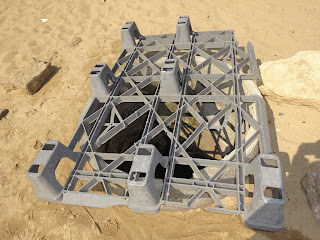Bangalore is a city of gardens, blessed
with a salubrious weather ranging between 12 Degree Celsius in the winters and
32-35 Celsius in the summer months. This heavenly weather has been changing in
recent years, with winters temperature not going below 15 Celsius and summer
temperature shooting up to 39 Celsius. The air-conditioned city is changing fast into a deep furnace in the summer months, beating even the temperature in
Chennai, a usually very hot city.
Bangalore does not have a river
running around it as in the other cities in India, like Hyderabad or Chennai or
Calcutta. It is a city of small lakes, hundreds of them, man-made, constructed
during the 16th century, when the city was built by its ruler, Kempe
Gowda, by damming the natural valley system available in the topography, with the help of bunds, mud embankments.
In the rainy season, especially in
the South-East monsoon, from June to October, the city gets 65% of its rainfall. The lakes fill in and the excess water spills downstream into the next
lake in the cascading system of reservoirs. The undulating terrain of Bangalore,
with its hills and valleys is well suited for such a system of lakes to be
developed.
Unfortunately, urban development had
taken its toll and the lakes disappeared speedily from the surface of the city.
Many were converted into playgrounds, hockey stadium, football stadium, golf course, central market, residential colonies and lay outs. Some 600 and odd
lakes came down to 280 in 1960s and then to 51 in 1985s and to only 17 good
lakes in 2000.
Of the lakes left, the major ones are
Ulsoor lake, Sankey tank, Bellandur lake, Lalbagh lake, Hebbal lake and Madivala
lake. Millions of rupees have been spent on Ulsoor lake, Lalbagh lake and Hebbal
lake to make them presentable once again. Bellandur lake, being highly
polluted, is sending forth froth, which spreads on to the surface of the nearby
roads. Last week it hit the newspapers again as fire was seen to be coming from
the centre of the lake!
And to come to Madivala lake, near my
place, though money has been spent in rejuvenating it, storm water drain that
carries sewage in it, is let loose into the lake and it breeds weeds and clogs
the lake. The worst weed that grows at a phenomenal rate is the water hyacinth,
called “Eichhornia Crassipes.” It is a native of Amazon basin in South America.
This pest seems to have been
introduced to India, especially Calcutta by the British and it has spread to
the Kerala and other places in the country, including Bangalore. It blocks the sunlight,
starving oxygen to the other plants and fishes, killing them in the process. It
makes boating impossible.
Hyacinth is a free-floating perennial
aquatic plant with leaves floating above the water surface, with bulbous
stalks. It is an invasive plant, overpowering the local plants by its abundance.
It is the fastest growing plant, adopting vegetative reproduction, by way of
stolons or runners. It is supposed to grow two to five meters a day and double
its population in two weeks.
No wonder, when I go for morning
walks to the lake, the weed that is confined to one corner, in a week’s time
engulfs almost the whole of the lake. Then one evening I had gone that side and
I witnessed forest department officials battling with it armed with JCB (excavators)
machines to scoop up the weed from the lake and deposit it on the banks in huge
mounds.
Two JCBs were precariously positioned
and a few men were down in the water, with water coming to their knees, pushing
the floating weeds towards the JCB with some poles; another man in a boat was
also pushing these weeds towards the machine with a pole and with the whole
side surface of the boat.
In the disturbed waters, but sitting pretty on the leaves of water hyacinth were birds, hundreds of egrets, pecking on the
fish; also, were the purple moor hens, busy hunting insects and small fishes;
in between one can see the dull brown of the paddy birds, silently sitting and
catching their prey. Occasionally a white throated kingfisher would fly past
trying to swoop on a fish or two.
It is a battle. The forest officials
were confident that they will be able to remove the weeds within another three
months and then the monsoon will take over. When the rain comes, the floating
weeds are swept off to the next lake and then to the next and so on and find
their own grave. It is only when the summer comes and the water level is
reduced, hyacinth takes over and profusely grows covering the whole surface of
the lake.
Till then it is an ongoing battle for
the forest department against the profuse growth of the mighty floating weed,
water hyacinth, equipped with JCBs and a few men with their bare feet and
hands.
I wished them all the best and
returned with a heavy heart, first to see the weed covering almost the whole of
the lake, spoiling the waters and then to see the plight of the men in the
waters struggling for hours on end for a small wage, pushing the weeds towards the
machine.
A poor country, but fast developing
into an urbanised country, with all the ills such a development
would bring. Can we stop the development? No!
Can we stop the misery of human
beings caught in the rut? May be yes, if we raise our voices loud enough against
such inhuman working conditions.
Lets spread the awareness of such horrible and pitiable working conditions in this fast developing country.






